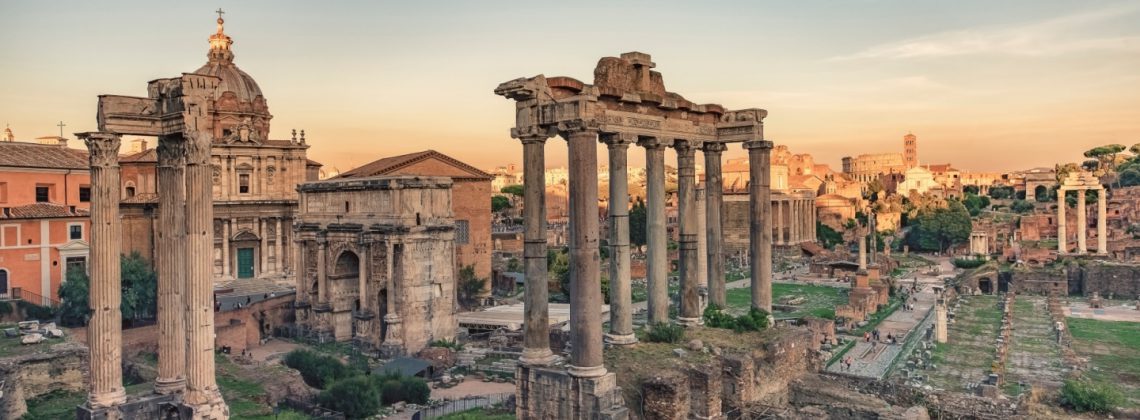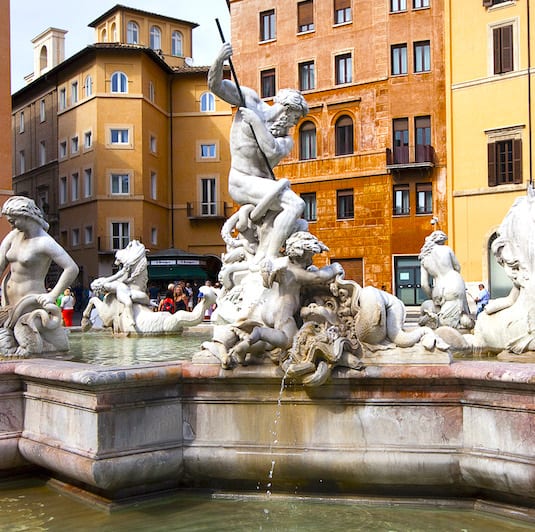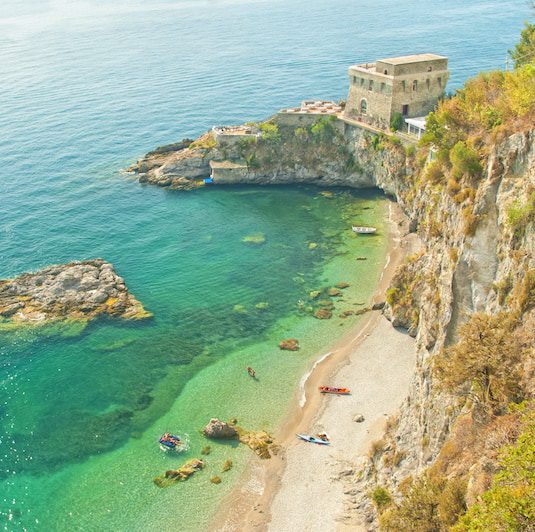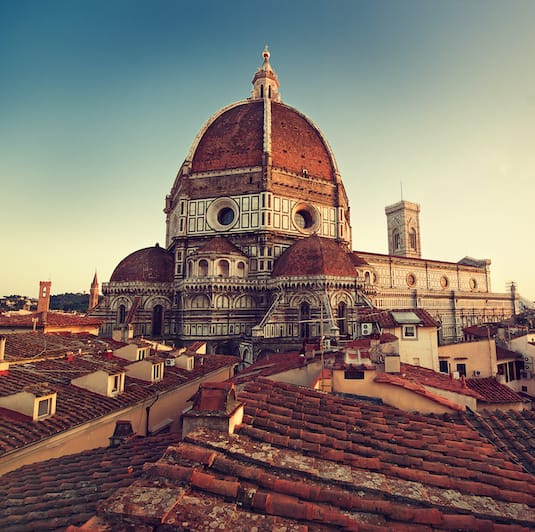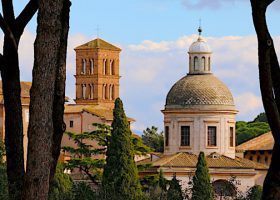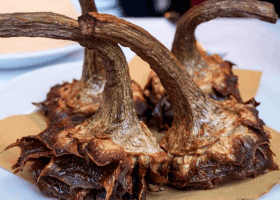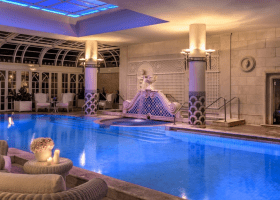When in Rome, you must visit the Colosseum. Unsurprisingly, there are hundreds of amazing Roman ruins in Rome. The city is brimming with history, and we’ve created this list of the top Roman ruins in Rome.
Pro Tip: Planning can be tough, but it’s easier to organize your trip when you have all your resources in one place. Create a browser folder and bookmark this post along with our dedicated guide to planning your visit to Rome, where you’ll find everything you need. Also, check out our article on the best Colosseum tours.
Roman Ruins in Rome – Beyond the Colosseum
The Colosseum is undoubtedly one of Rome’s main attractions. It sits in a landscape steeped in history. But for the archaeology lover, there is so much more to see and do in Rome. This list is by no means exhaustive; there are some well-known sites and some lesser, but all should be on the itinerary of any Roman history lover.
Once you’ve explored this list, use the toggle menu below to check out Rome’s other famous attractions.
Not ready to book a tour? See why a Colosseum tour is worth it.
1. The Forum
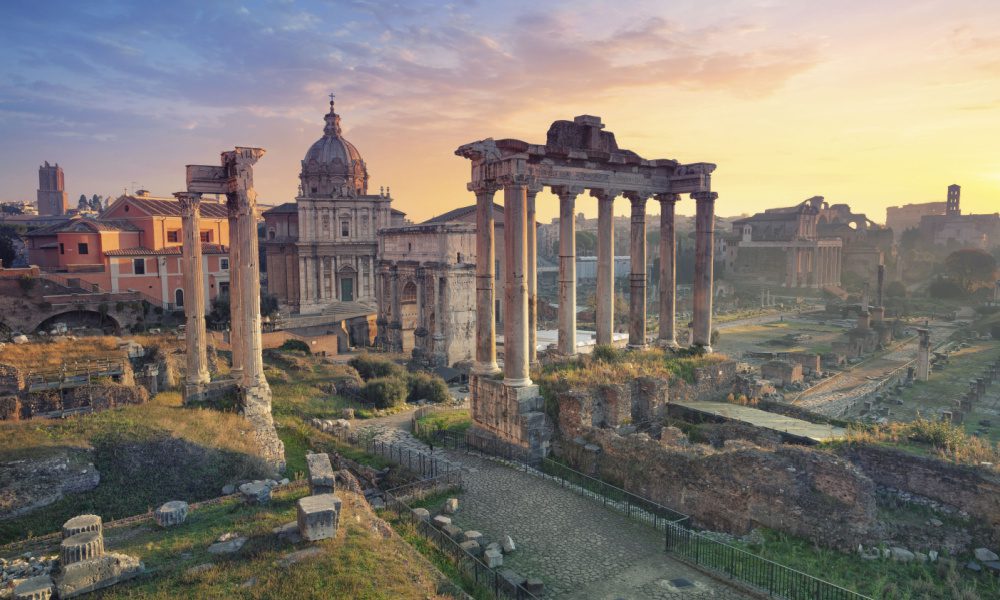
Personally, the Forum is my favorite series of ruins in Rome. The Colosseum is incredible, but at the end of the day, it’s an old sports stadium. The Forum, on the other hand, is the center of the Roman world. During the Republic, it was the principal marketplace. The remaining temples show it was central to Roman religious life. The Basilicas (old law courts, not churches) show it was the center of Roman judicial affairs. The Curia, or Senate House, was the center of political life, and the triumphal arches show it was the center of celebrations. The Forum was a milling point used by Romans from all walks of life on an almost daily basis.
Few existing sites can show Roman society’s complexity in such an evocative way as the Roman Forum.
Location: The Roman Forum
Not ready to book a tour? Check out our best Rome tours to take and why.
2. The Palatine
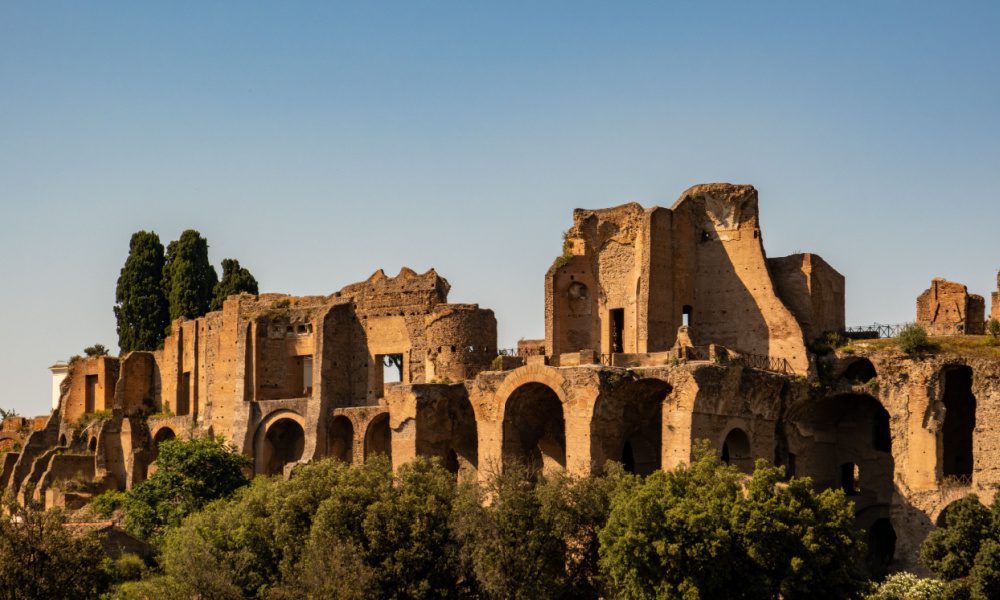
According to legend, the Palatine hill was the founding spot of Ancient Rome. Archaeological finds show that it housed Rome’s first permanent settlement. Still, by the time the Roman Republic came tumbling down, it had ceased to be a hill for the entire populace of Rome and had instead become the residence of the rich and powerful.
During the Imperial age, the Palatine became the location of the imperial residence. From the word ‘Palatine,’ we derive the modern word ‘palace.’
The profusion of archaeological ruins on this hill can make it challenging to comprehend. We have compiled a free guide of the Palatine’s must-see sites, but the best way to understand the complexity of the Palatine is with an expert guide. We have several options you can find here.
Location: Palatine Hill
Not ready to book a tour? Check out our best Rome tours to take and why.
3. Baths of Caracalla
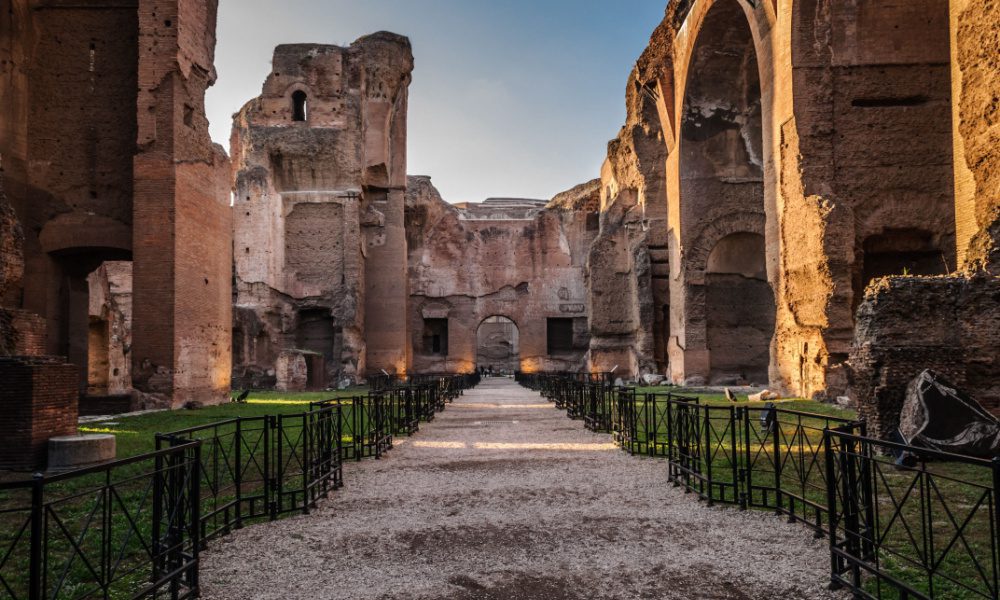
In the heart of Rome, just off one of the city’s main highways, sits the archaeological complex of the Baths of Caracalla. Poppies and wild mint grow between the crevices of ancient mosaics in what is undoubtedly one of Rome’s most surprisingly tranquil and beautiful sites.
Marcus Aurelius Antoninus (known as Caracalla) commissioned the bathhouse in 212 AD. Nine thousand construction workers toiled on the complex for five years before opening in 217 AD. It is hypothesized that 1,600 bathers could be accommodated here simultaneously.
The baths remained active until the 6th century when the Gothic invasions shut off the aqueducts, and the monumental bathing structures fell into disuse.
In the 16th and 17th centuries, a renewed interest in antiquities saw many decorative pieces removed. The Belvedere Torso (an inspiration for Michelangelo’s image of Christ in the Sistine Chapel) now sits in the Vatican. The Farnese Hercules, Bull, and Flora are all found in the National Archaeological Museum of Naples. Two huge bathtubs can be seen in Piazza Farnese just off Campo dei Fiori in central Rome.
Location: Baths of Caracalla
4. Teatro Marcellus
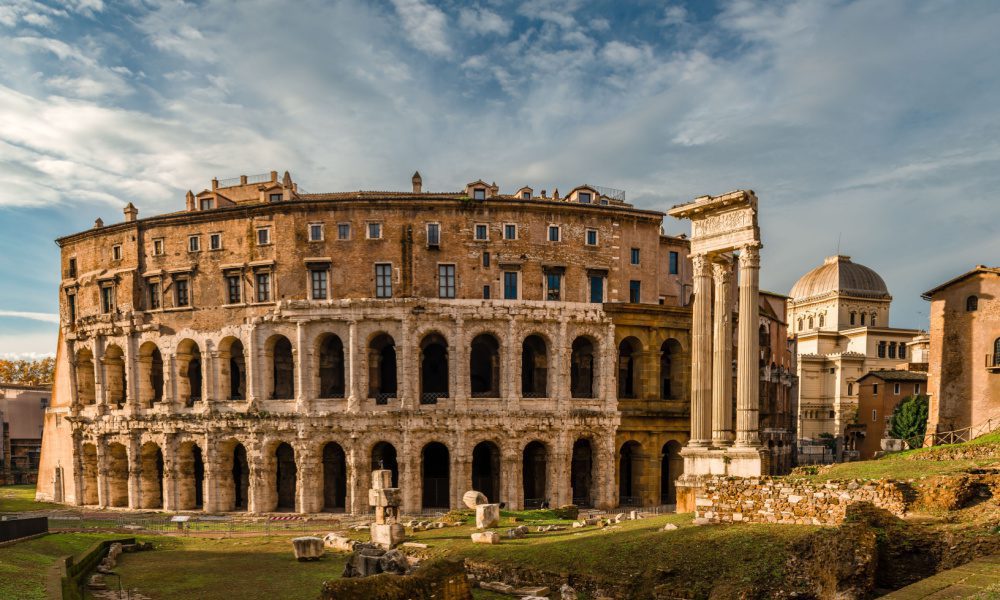
Located between the Forum and Tiber Island, the Teatro Marcellus was commissioned by Julius Caesar but completed by his adopted son, Emperor Augustus, with work completed in 17BC.
By the time of Caesar’s assassination, workers had completed little other than land clearance, so it was up to Augustus to finish the work. Upon its completion, Ausgusts dedicated the theatre to his nephew and designated heir, Marcellus. If you are thinking, ‘I’ve never heard of an Emperor Marcellus,’ that’s because he never made it that far. Marcellus’ death has often been shrouded in mystery. Many accused Empress Livia of poisoning Marcellus to ensure her son Tiberius would become the next Emperor of Rome. But personally, I feel Livia gets a bad rap as the pantomime villain of the first Imperial household.
The theatre itself is a site to behold. Until the 1930s, the lower arcades were shops, and the upper sections were converted into a palace by Baldassarre Peruzzi for the Orsini family. Today, the palace is home to the Sovereign Order of Malta Embassy to the Holy See and Italian movie star Sophia Loren. In its pomp, the theatre had a capacity between 15,000 and 20,000.
Location: Teatro Marcello
Not ready to book a tour? Find out why a Colosseum tour is worth it.
5. The Ara Coeli Insula

Hidden in plain sight, tucked between the Vittoriano and Campidoglio, the Ara Coeli Insula is one of the few lower-class residences from ancient Rome still intact.
While Holywood often clouds our image of Rome, we must imagine something dirtier and grittier than the white marble palaces portrayed in blockbuster classics. Most Romans didn’t live in sumptuous residences but rather in large tenement blocks known as insula. It has been suggested that there were 45,000 of these tenement blocks in Rome at the height of Rome. Today, the Ara Coeli insula is the only one still intact.
We know Roman law stipulated these structures could be four stories tall and reach a height of fifteen meters or just under fifty feet. The fact that the law was created would suggest they once built them bigger, and they kept collapsing. Just like today, commercial spaces would have utilized the ground floor. Different from today, though, you didn’t want the penthouse. The higher floors were for the poorest tenants. There was no lift, fire escape, or air conditioning to cool the sun’s heat baking the roof above you.
The best place to get an understanding of a multi-leveled ancient Roman city is not the famous ruins of Pompeii, where the pyroclastic blast destroyed anything that peaked above the city walls, but rather the oft-forgotten archaeological ruins of Ostia Antica, the ancient port of Rome.
Location: Ara Coeli Insula
6. Via Appia
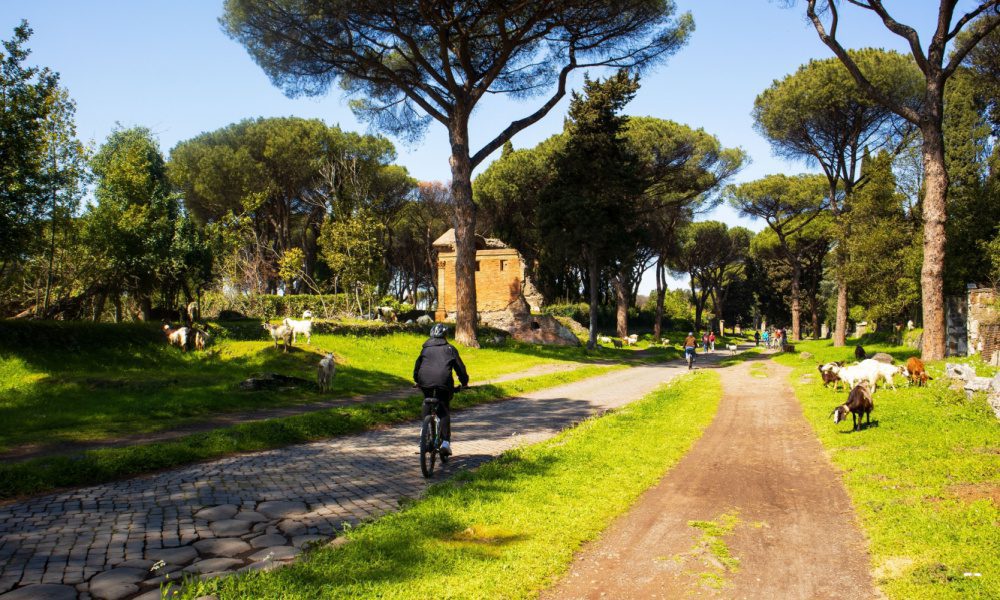
Often referred to as the ‘Queen of Roads,’ the Via Appia was the first of the great Roman roads that formed an intricate network around the empire. Commissioned by the Roman Censor (a bring political position, don’t worry about it) Appius Claudius Caecus, hence the road’s name. It was designed to connect Rome and Capua in the south. Construction started in 312 BC. The Via Appia is uncompromisingly straight, and the first twelve miles are remarkably well-preserved. Today, you can hike or cycle along this stretch of the Via Appia, which is a great way to escape the chaos of Rome.
Location: Archaeological Park of Appia Antica
7. The Pyramid of Cestius

Did you know that Rome has an ancient pyramid? Well, you do now. The pyramid was built in 12 BC to house the remains of Gaius Cestius, a praetor, tribune of the plebs, and member of the college of Roman priests (more boring political position, don’t worry.) It took a mere 330 days to construct. We know all this because they kindly inscribed it onto the pyramid.
The pyramid was a burial chamber (though built in the Numidian style rather than Egyptian), and its preservation is primarily due to it being incorporated into the Aurelian Walls in the 3rd Century AD.
Today, guided tours inside are possible, or you can wander the ground of the protestant cemetery to get a better look. You’ll also find a plaque commemorating the liberation of Rome on June 4th, 1944, by US and Canadian 1st Special Service forces, who entered Rome through Porto San Paolo beside the pyramid.
Location: Pyramid of Cestius
8. Monte Testaccio
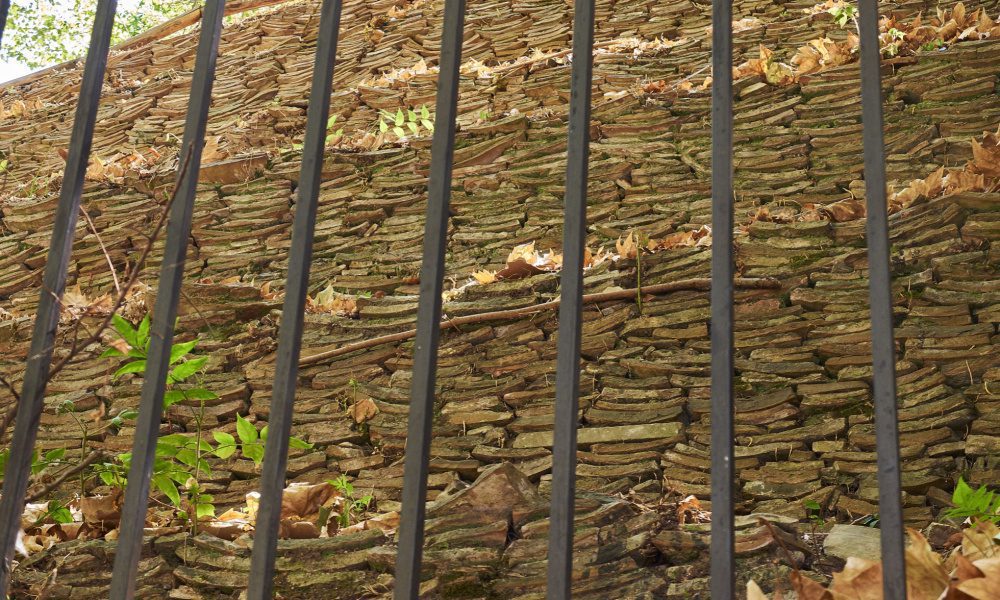
Monte Testaccio is a dump! Not figuratively, but instead quite literally. It is an ancient Roman Garbage dump. In particular, a garbage dump for amphorae (those are the big clay vessels they would transport olive oil in.) The mountain of Testaccio consists of 53 million amphorae (enough to hold 6 billion liters of oil,) with 85% of that coming from Spain and Portugal. Most of the vessels were state-sponsored (according to the stamps in the terracotta) and would have been given out to Roman citizens for free as part of a daily ration.
While you can’t tour the mountain of rubbish today, there is a great way to see it, including a great dinner. If you head to Flavio al Velavevodetto, you can try some great Roman dishes, but their glass wall shows a cross-section of the piles of pots.
Location: Flavio al Velavevodetto
9. Ostia Antica
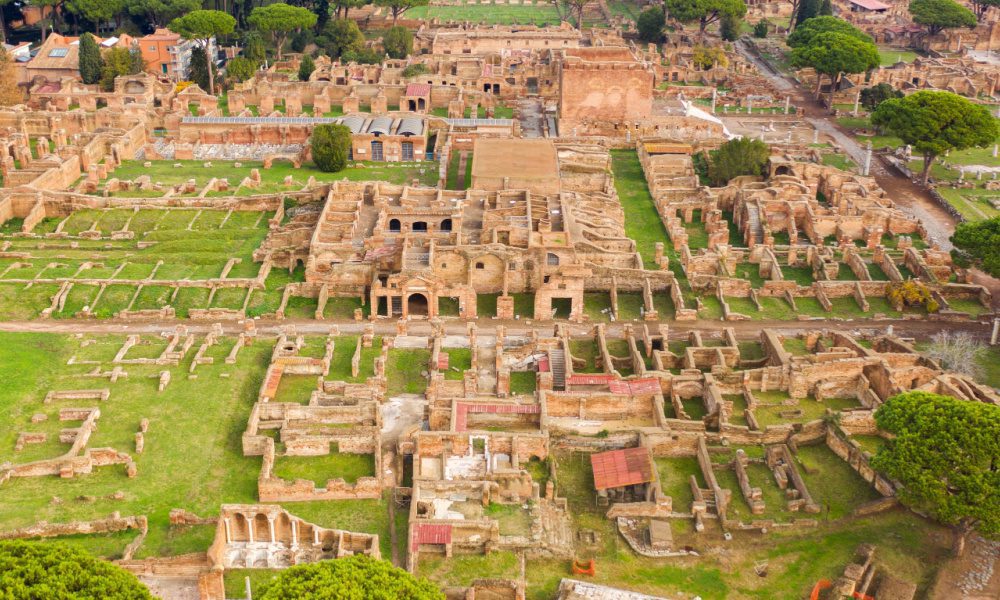
Although strictly speaking, these Roman ruins are located around thirty miles from Rome. Ostia (which means mouth in Latin) was the port city of Rome situated in the mouth of the Tiber River. It can be argued that it was Rome’s first and most important colony. It was the naval base of Rome and, more importantly, its store cupboard. Here, the grain that fed the million-plus inhabitants of Rome was stored before distribution.
As the Roman Empire declined, so did Ostia until a storm forced the Tiber River to change direction, and much of the city became submerged in silt. This leads to a remarkable level of preservation that leaves vast sections of the city explorable today. It may not have the glamour of Pompeii, but if your time in Italy is limited, this is a fantastic alternative. After all, Pompeii was a holiday town of little importance till the eruption, but Ostia was the life-support of Rome.
Location: Ostia Antica
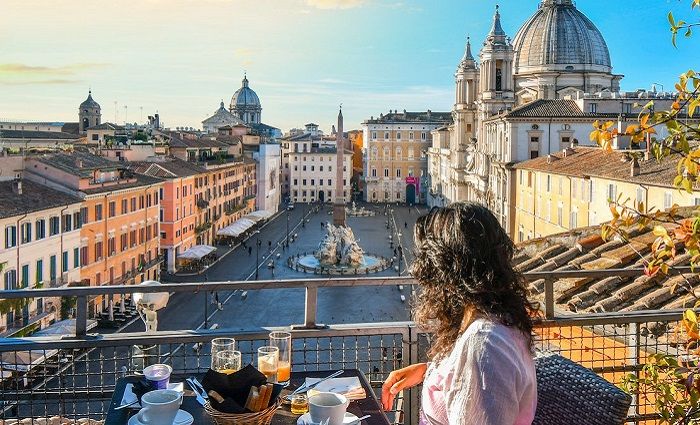
Where To Stay in Rome
Rome has a rich cultural history and many iconic landmarks to explore. Plan where to stay in the magnificent Eternal City in the best neighborhoods.
Here’s Where To Stay in Italy’s Most Popular Destinations
Rome, Florence, Venice, Amalfi Coast, and Capri

